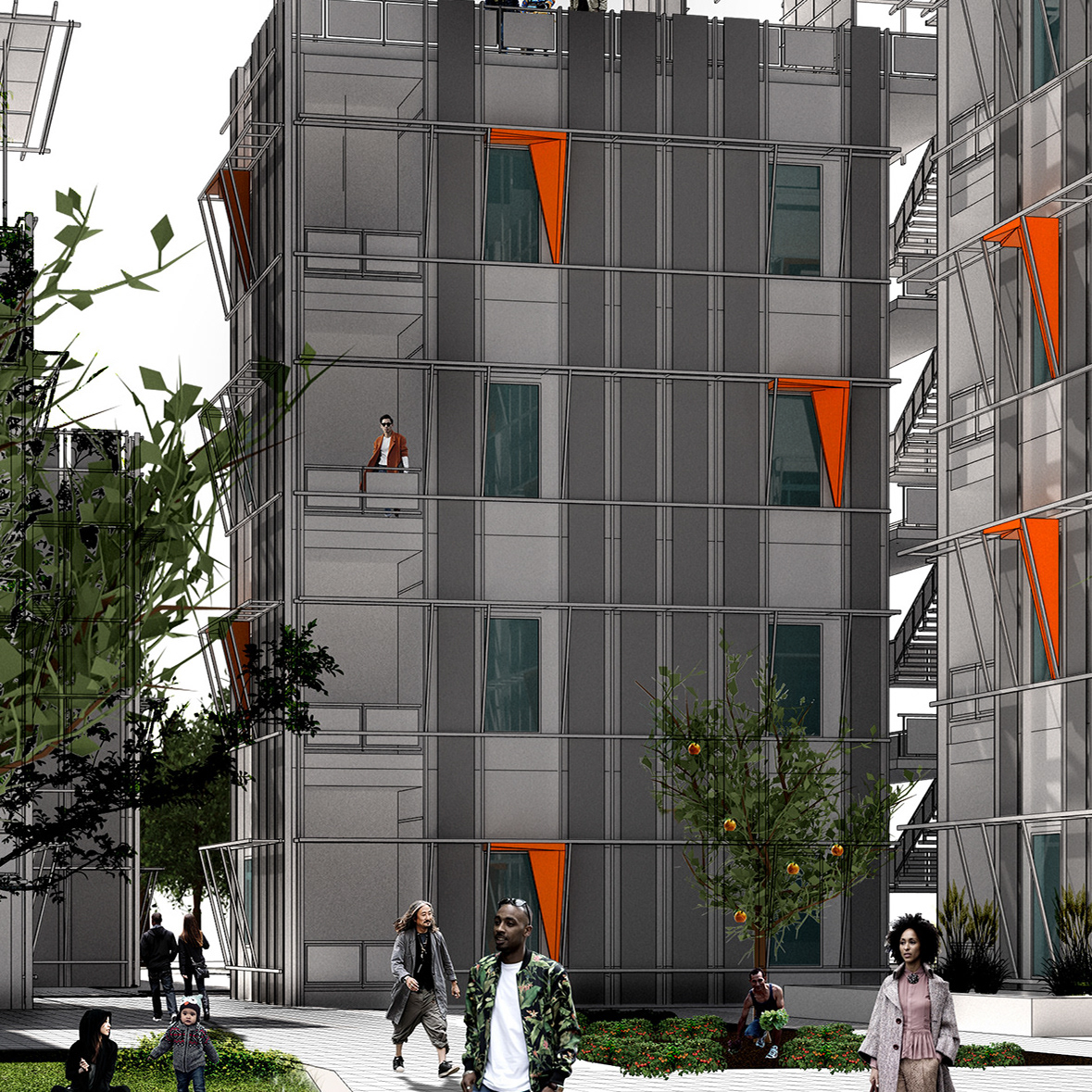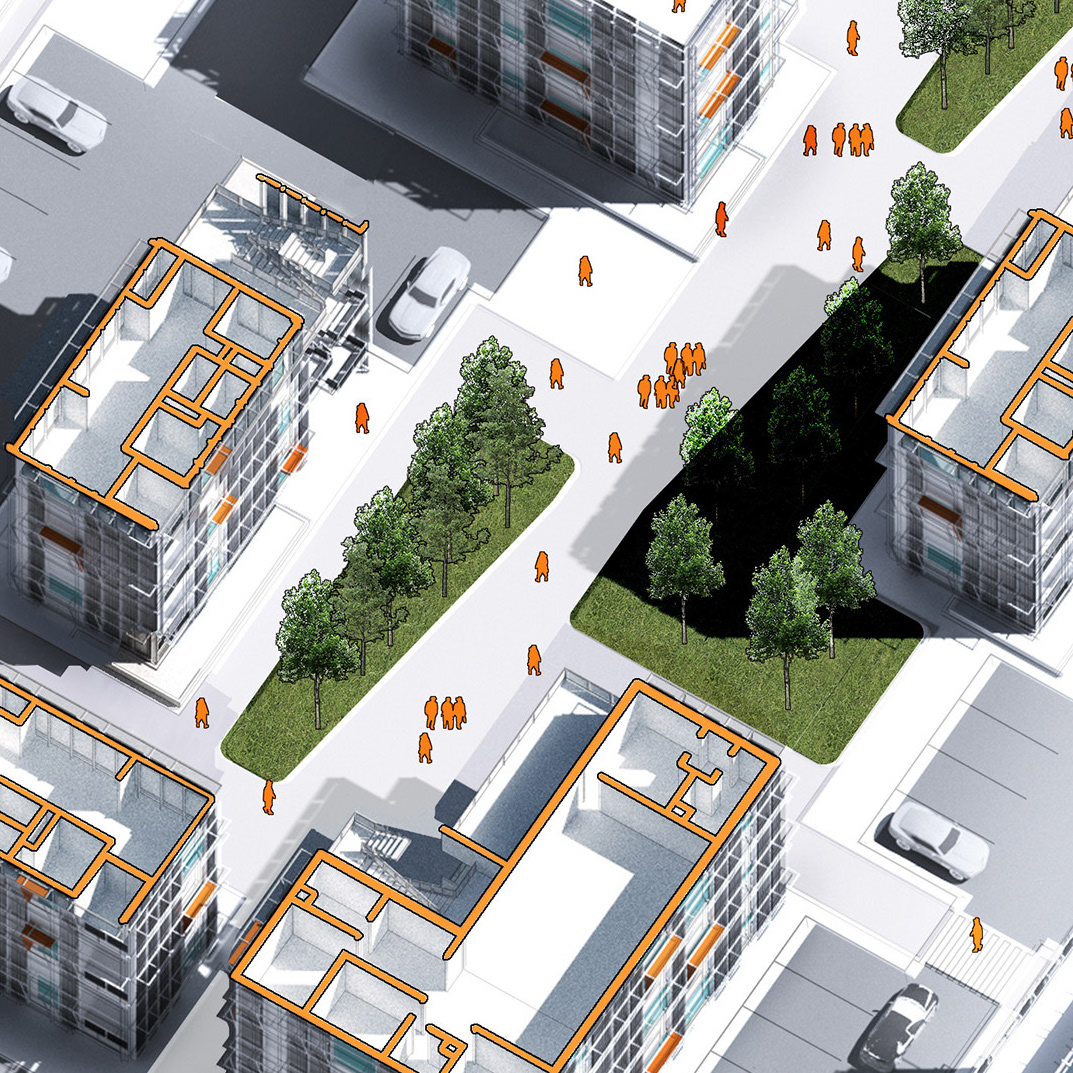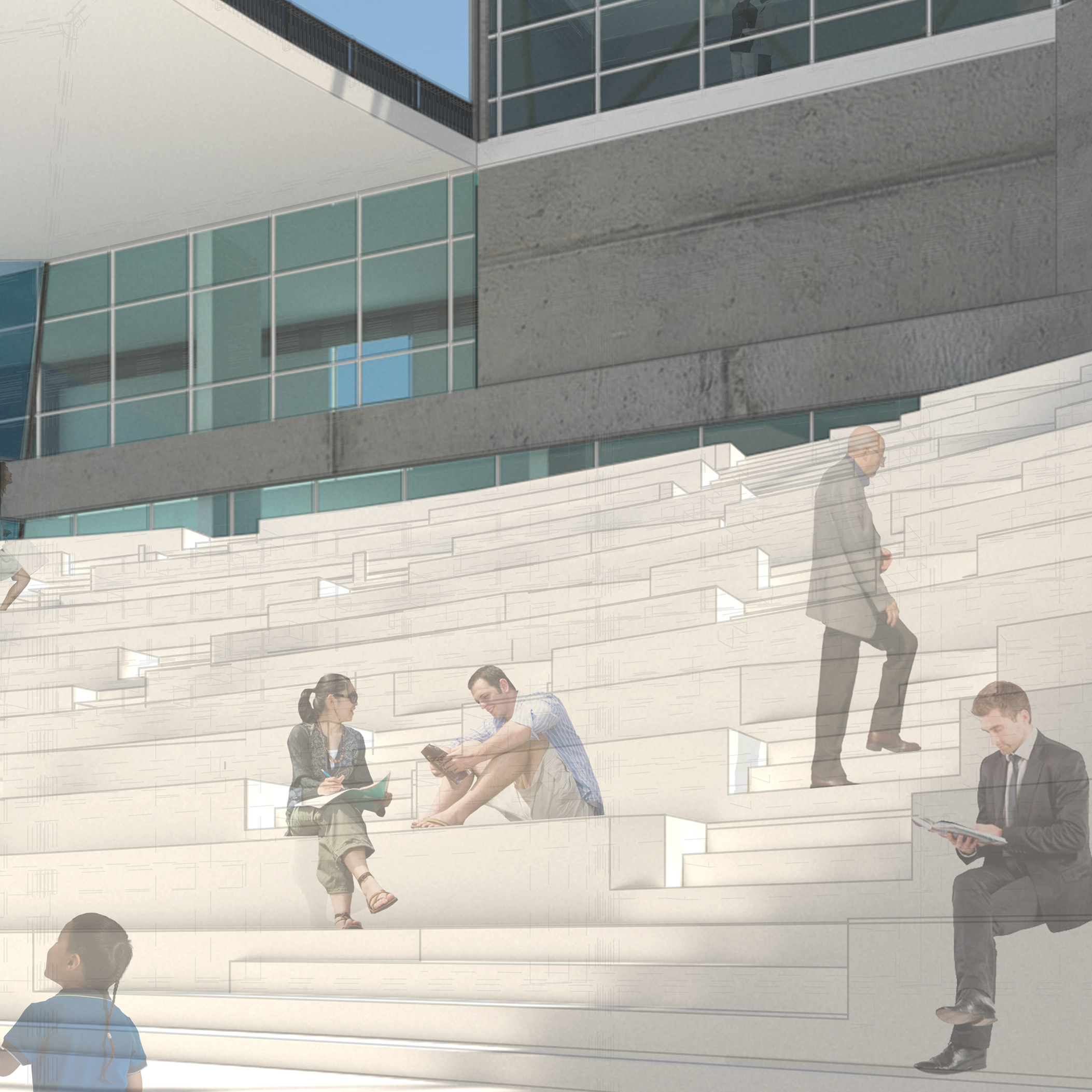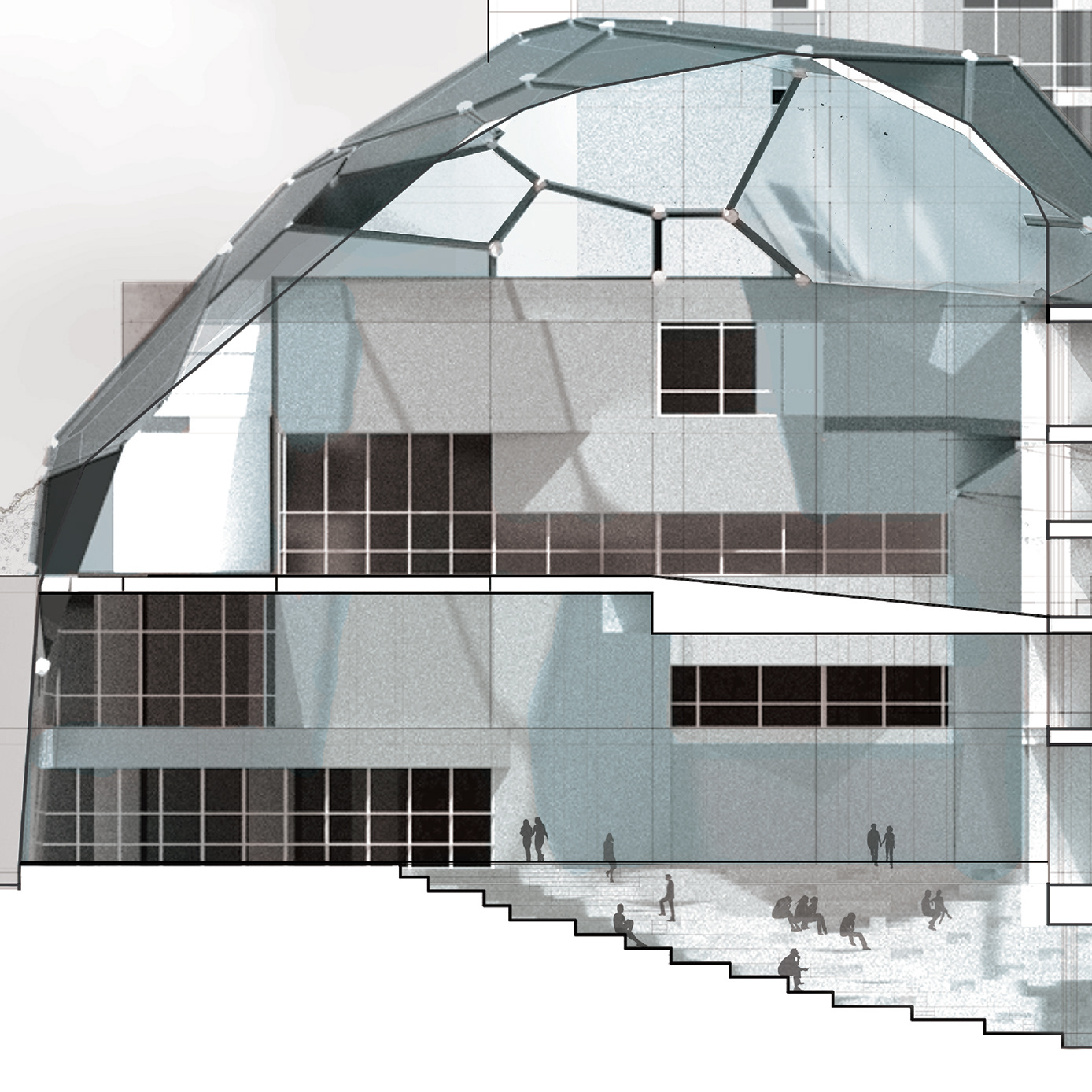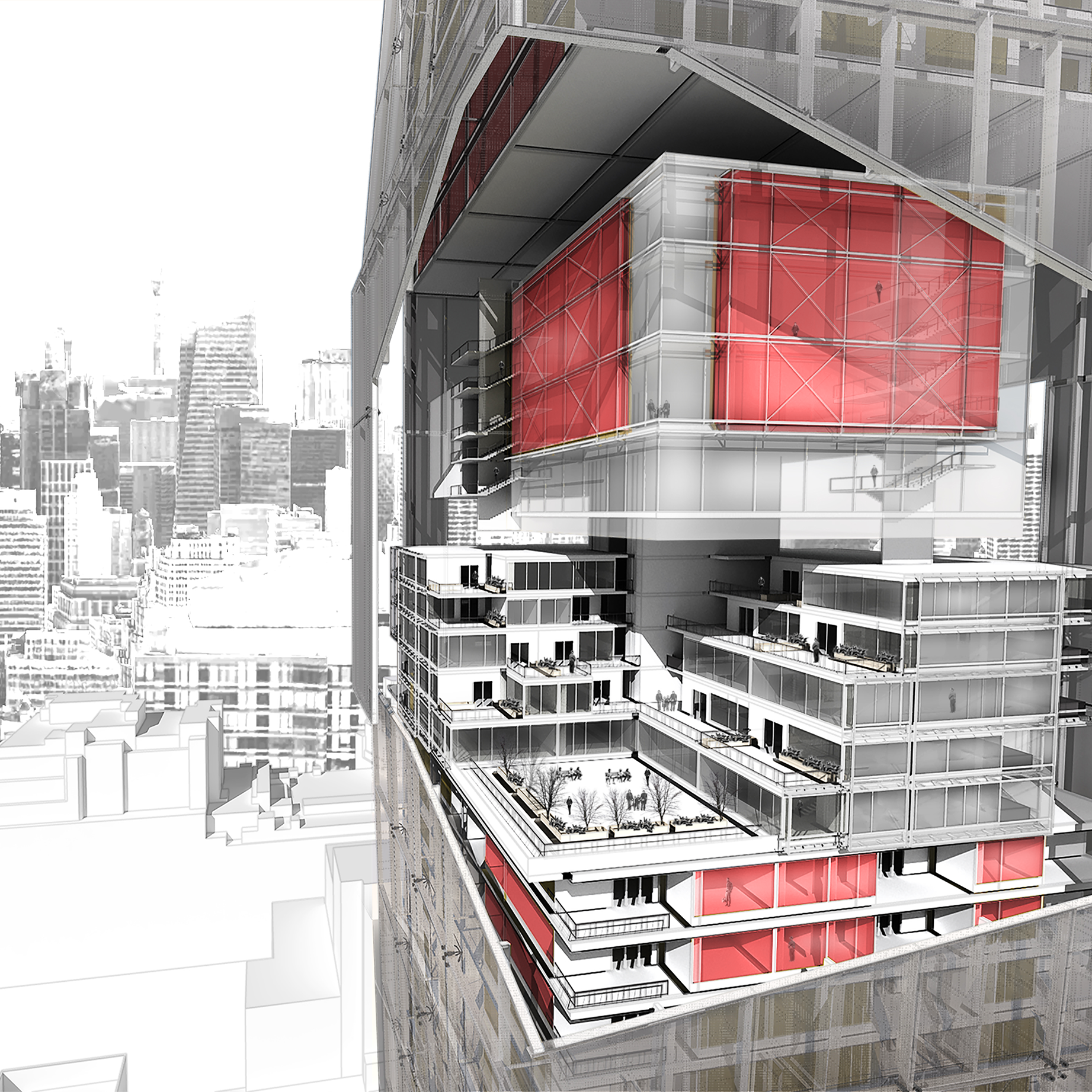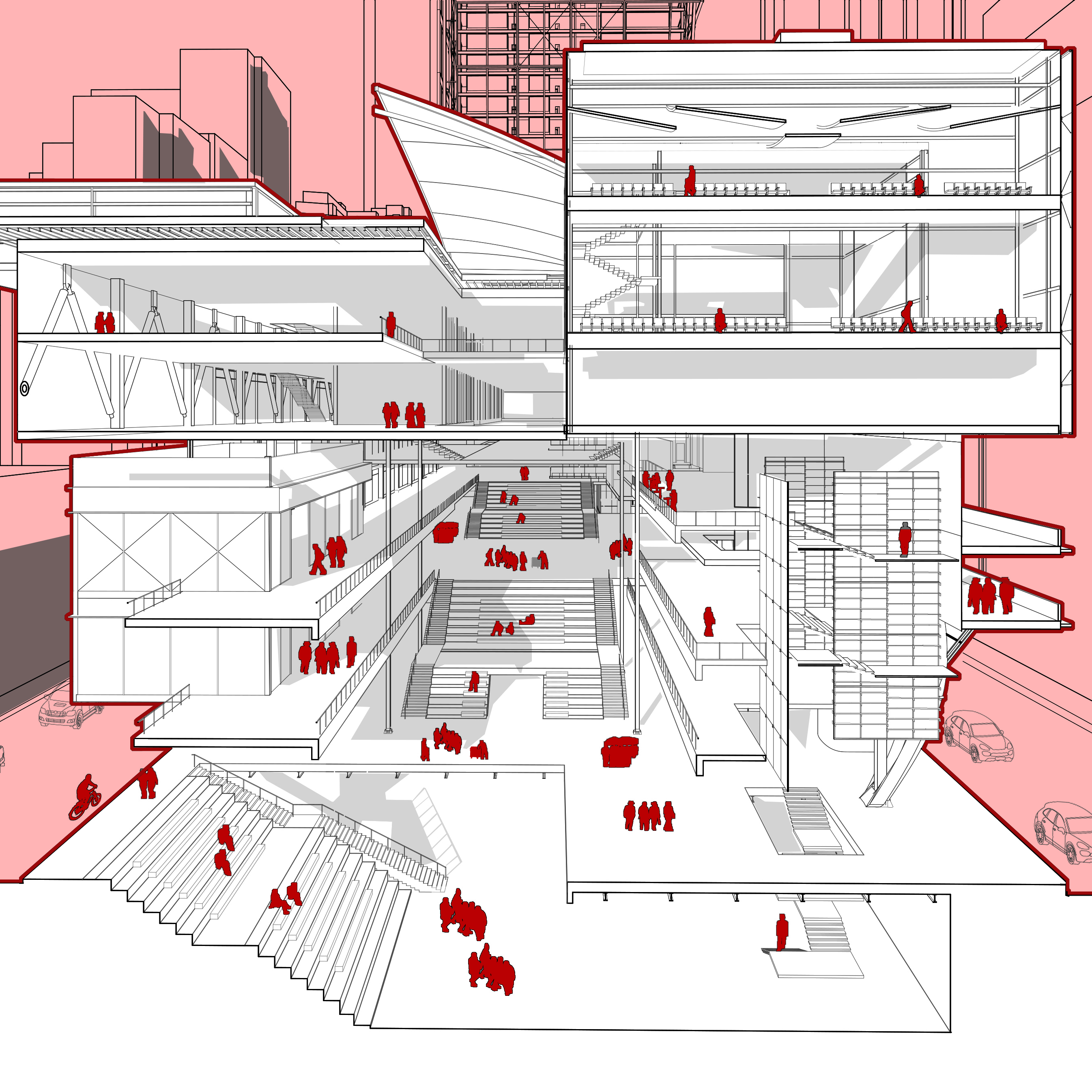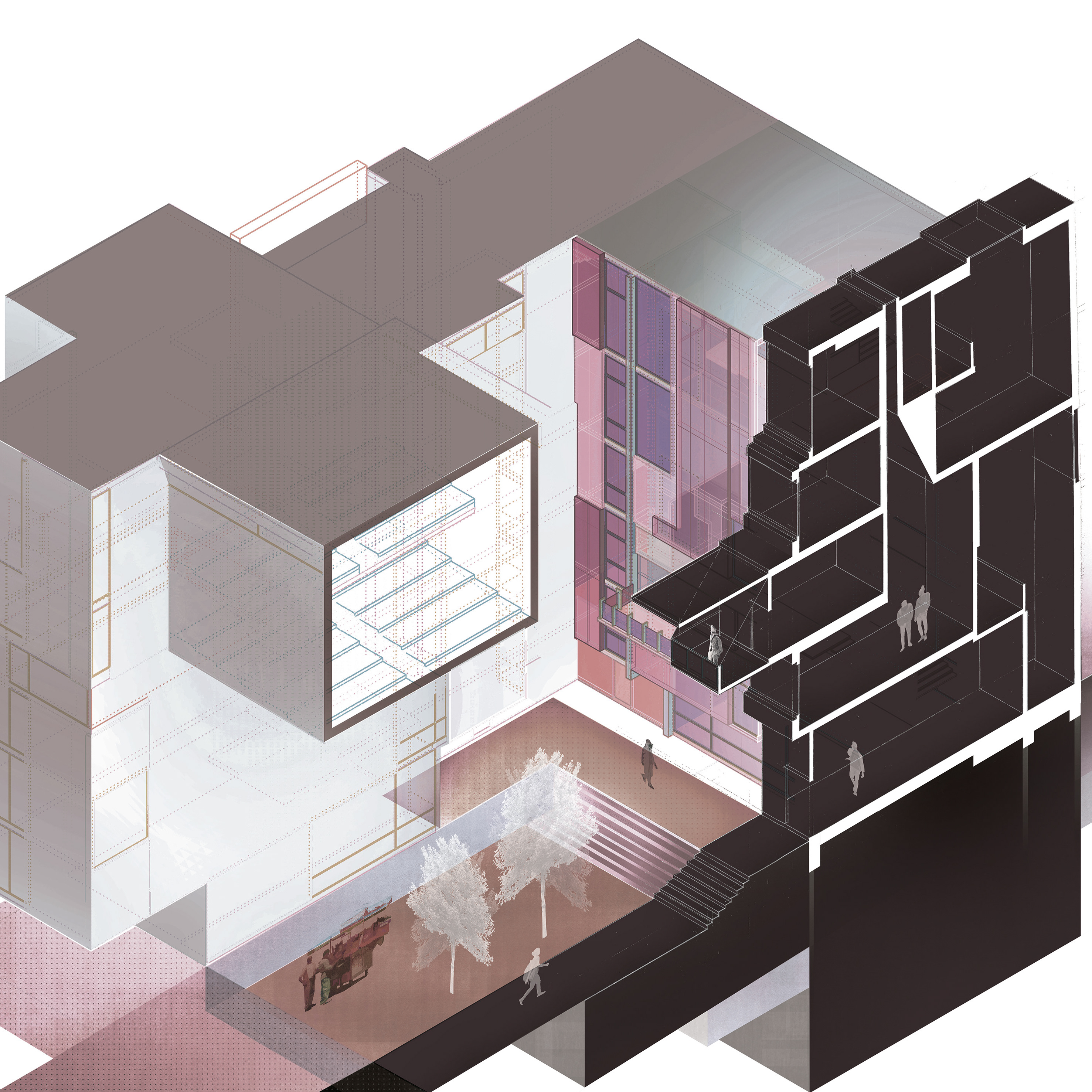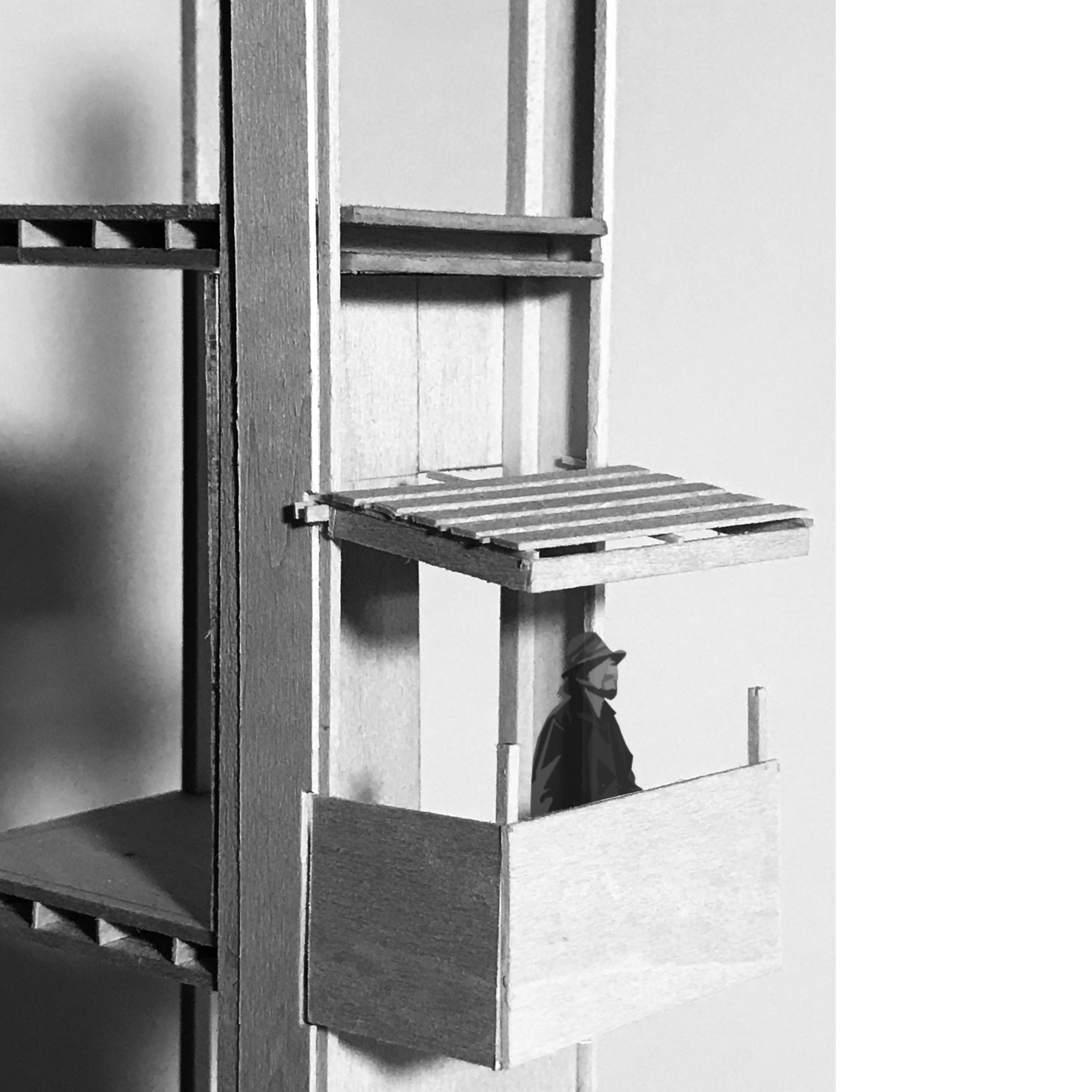in collaboration with EMMA POWERS and JIRAYUT PURIBHAT
FALL 2022 - professors CRAIG BORUM and CLAUDIA WIGGER
Jefferson Chalmers, DETROIT, MI
FALL 2022 - professors CRAIG BORUM and CLAUDIA WIGGER
Jefferson Chalmers, DETROIT, MI
Ad Hoc refers to that which is necessary or needed. Located in Southeast Detroit, just West of Grosse Pointe (among the wealthiest cities in Michigan), Jefferson Chalmers is very evidently poorer than its neighbor. It has much higher vacancy and poverty rates, much lower property values and people with access to internet in their homes. The shortage of internet access was particularly eye-opening and concerning. Decreased internet access correlates very directly with lower census response rates, and lower census response rates means fewer funds for the residents of this neighborhood.
The site also demonstrated that it was mostly comprised of single to 3 story single-family homes of a relatively modest scale despite being adjacent to the once prosperous Jefferson Commercial Corridor. There was also a clear culture of making in the neighborhood, indicated by several DIY porches, among several other smaller projects.
These findings, in the ethos of Ad Hoc, indicated the importance of the following programs
Affordable and Accessible Housing
Spaces or Interventions with Internet Access
Educational Spaces
Makerspaces
Retail
Spaces or Interventions with Internet Access
Educational Spaces
Makerspaces
Retail
These programs are those which will sustain and strengthen the current population of these census tracts while providing the framework for future population expansion.
Several typologies were thus introduced to the site as a method to create a visually and demographically diverse community. This is the abbreviated version.
As mentioned, Jefferson Chalmers, along with several other Census Tracts as labeled above have disproportionately low census response rates and at-home internet access. This correlation, along with the evidently lower household income rates suggest that these areas are underfunded.
Time poverty also highly affects the residents of these tracts, particularly those households without cars. Thus, it may take these residents up to a whole waking day to accomplish what may take households with vehicles only a couple hours.
The obvious solution to the latter problem is to increase public transportation options and efficacy. An essential concept to Ad Hoc, however, is to implement solutions now which may serve as the bones for future (even better) development.
An essential proposal of Ad Hoc, along with the housing and commercial elements on the other pages is the implementation of a series of “WiFi Follies,” popping up throughout the Jefferson Corridor. These Follies were placed in spaces which, according to Google, are “busy areas” or “high traffic areas,” but also in places which the team projected to become busy as more development comes.
These WiFi follies are therefore not standalone structures. Our hopes were that these would mitigate the impacts of flooding on this side of the Detroit River by funneling collected water to our proposed constructed wetlands.
An essential proposal of Ad Hoc, along with the housing and commercial elements on the other pages is the implementation of a series of “WiFi Follies,” popping up throughout the Jefferson Corridor. These Follies were placed in spaces which, according to Google, are “busy areas” or “high traffic areas,” but also in places which the team projected to become busy as more development comes.
These WiFi follies are therefore not standalone structures. Our hopes were that these would mitigate the impacts of flooding on this side of the Detroit River by funneling collected water to our proposed constructed wetlands.
The relationship between making and community building is especially evident in Jefferson Chalmers. Ad Hoc simply utilizes, supplements, and facilitates this dynamic via informal makerspaces.
Makerspaces, like studios, are dirty and loud. Ad Hoc prioritizes the truth surrounding work over traditionally sanitized perceptions and depictions of housing proposals.
A series of accessible elevated walkways transform the handicap of flooding into a programmatic element. Constructed wetlands likewise mitigate flooding throughout the rest of the neighborhood.
Ad Hoc anticipates the eventual failure of absolute flood prevention. Instead, the constructed wetlands and walkways attempt a harmonious relationship with a perceived inevitability.
Ad Hoc does not prioritize density in dwelling units. It aims for frequent serendipitous interactions among its internal residents and those surrounding it in Jefferson Chalmers. These are accomplished through dynamic exterior spaces as expressed in the previous vignettes and through articulated facade elements.
Three housing models adopt different social expectations and spatial configurations from those of the existing Jefferson Chalmers neighborhood, which is homogenously comprised of single-family homes.
These are: Co-Housing, Multi-Family, and “Social Condenser.” The difference in program to the surrounding Jefferson Chalmers is reconciled by a familiar scale.
Where each typology was articulated in every previous representation, this construct indicates the spatial pinches and expansions between masses.
Likewise, the constructed wetlands and existing foliage were slightly exaggerated as an essential spatial and programmatic element.
The range of typologies is definitely a little unwieldy - by design. The Ad Hoc site, as a whole, was designed for a range of programs and activities, whether formally defined or, as the name suggests, Ad Hoc and even incipient. Ad Hoc anticipates future development and imprecise activity.
Each typology correlates, but is not strictly defined by a spot on this privacy spectrum.
Subsistence Commercial is a direct reference to subsistence farming. As the Ad Hoc neighorhood is located adjacent to a once thriving commercial corridor, it seemed as necessary to include commercial-retail space which would sustain a beyond-transactional relationship with the community.
At the Northeast corner of the site, these Subsistence Commercial structures would provide affordable services or goods for the community by its own members. The strictly Commercial spaces are only at the street level, and the above levels are dedicated either to Education or to Housing for transient, temporary, or poorer members of the community. These residents operate the street level vending, but only to sustain. Excess is unnecessary, and therefore disagrees with the Ethos of Ad Hoc.
Though not residential, the Communal Greenhouse is highly indicative of the Ethos of Ad Hoc by making explicit the relationship between Education and Production, or more fondly, that between Learning and Making. It considers the community’s relationship to these activities by treating these activities as public events for both education and spectacle.


